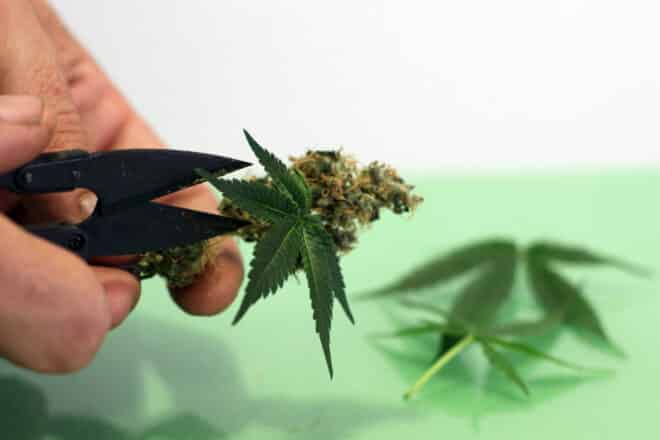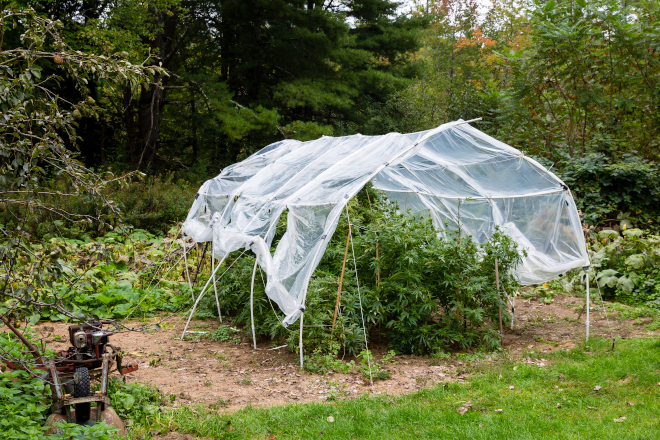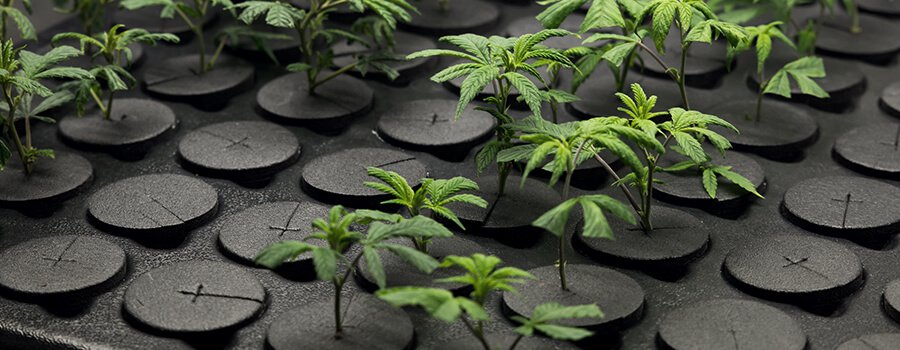
How Does Growth Quality Affect Your Cannabis Experience?
- Factors that affect the quality of cannabis
- The importance of terpenes and the curing process
- How genetics affect the quality of a cannabis strain
- Pros and cons of indoor vs. outdoor-grown cannabis
- Benefits of organically grown cannabis
Boy, marijuana sure is complicated these days with all these cannabinoids that do different things and all kinds of terpenes with different flavors and effects, not to mention different bud densities and sizes and colors and textures. Wouldn’t it be great if you could optimize for all of these qualities and create a super-delicious, ultra-potent bud?
It would be, well, complicated. Many factors go into the quality of cannabis flower.
The wide world of cannabinoids
We don’t need to say too much about cannabinoids. Most people by now know that THC gets you high and CBD doesn’t. There are also other cannabinoids such as CBG, CBN, CBC, etc. which have similar but different effects and benefits.
It goes without saying that a cannabis strain that packs 30 percent THC will have a far different effect than a flower that’s high in CBD and other cannabinoids.
The levels of cannabinoids in cannabis flower are mainly attributable to the strain. However, different growing techniques and practices can produce buds that are higher or lower in potency.
Cannabinoid levels are also dependent on how early a plant is harvested and how it’s dried and cured, as we’ll see below.
The importance of terpenes in high-quality cannabis
Have you ever popped open a baggie of “skunk weed” and almost instantly the entire room smelled like a skunk walking through an orange grove/Christmas tree farm spraying turpentine and diesel fuel? Someone could be sitting 20 feet away and almost immediately catch the scent when you walk into the room.
That strong smell of fresh cannabis is the result of aromatic oils called terpenes.
Terpenes give marijuana and high-cannabinoid hemp flower their distinct aromas.
Different terpenes have different scents. Some smell like flowers, some like pine or citrus, some smell fruity or like berries, some are spicy, and some smell like diesel fuel. It’s the combination of terpenes that gives cannabis its aroma.
Not only that, each of these terpenes has active properties of its own. The particular combination of terpenes and cannabinoids is responsible for not only the flavor but the overall effects of the flower. For medical marijuana patients wishing to treat particular symptoms, terpene content can be critical.
Terpenes are mighty powerful compounds. Cannabinoids are measured in percentage of the flower by weight and generally make up anywhere from 10 to 30 percent of the bud. Terpenes, on the other hand, generally make up less than two percent of the fresh bud. A typical dosage of THC is ten milligrams. If you were to consume ten milligrams of terpenes it would hit you like a ton of bricks.
One easy-to-understand concept is the fact that the more potent a batch of flower smells, the more potent will be its medicinal effects. This is very important for medical marijuana patients.
Curing cannabis flower has a tradeoff

There are several tradeoffs in growing cannabis. The most important of them all is the curing process used on the crop. The same crop can go through two different curing protocols and end up possessing different qualities.
After the cannabis flower is harvested, the terpene levels immediately begin to fall. A lot of terpenes are lost in the process as they quickly evaporate. You should smell a drying room! Once the water has evaporated out of the buds, they need to be cured. At this point, terpene levels have already dropped substantially.
You can think of curing like aging a fine wine. The curing process increases the potency of the flower by letting the processes that produce THC continue to do their thing.
The trade-off is, the longer you cure the bud, the more terpenes are lost. A fully cured bud can lose as much as 80 percent of the terpenes.
Oftentimes people will ask their budtender for the most potent flower. What they don’t realize is that higher potency means longer curing times. This results in a less aromatic, less medicinally beneficial experience.
Curing itself is complicated — more complicated than this makes it sound. Let it suffice to say that the curing process is one of the most important factors in the quality of cannabis flower.
How genetics affects cannabis quality
Every school kid knows that the way we look is determined by our genes. And our genes are handed down from our mother and our father. If your mother and your father both have brown hair and brown eyes, it’s unlikely that you’ll have blond hair and blue eyes. However, if you breed together people with varied genes you get more exotic people. The same is true with cannabis.
Over the centuries, humans have bred cannabis strains to express particular properties or to discover new properties. Some are bred to produce more seeds. Some are bred to produce stronger fibers. And some are bred to produce specific cannabinoid and terpene profiles.
If you keep breeding the dankest strains, you can produce an ultra-dank strain. And if you keep breeding strains with low THC you eventually produce flower that is high in other cannabinoids but devoid of THC.
If you’re looking for a good high for a music festival, then you need a strain that produces high levels of THC and energizing terpenes. If you’re looking for stress and anxiety reduction you need a strain that’s high in CBD and relaxing terpenes.
Two strains that seem to be identical can produce completely different effects.
That’s all we need to say about genetics. Tell a budtender at your local marijuana dispensary about the effects that you desire. They’ll know which strains are best for those effects.
Indoor-grown vs. outdoor-grown cannabis

The choice of growing indoors or outdoors also presents tradeoffs.
When growing indoors several factors can be tightly controlled to maximize quality. These include the room temperature and humidity, light hours, nutrients, water, and even CO2 levels.
C02 is important. CO2 is what the plants convert into cannabinoids and terpenes. You can’t increase CO2 levels outdoors. For this reason, growing indoors often produces higher levels of cannabinoids and terpenes than the same strain grown outdoors.
Growing outdoors may not produce superior potency. The trade-off here, however, is that growing outdoors is far less expensive. And lower costs mean lower prices.
Another tradeoff is the fact that artificial light doesn’t exactly match the spectrum of sunlight. While certain spectrums are more beneficial for the growth phase and the flowering phase, there’s no particular wavelength of light that you could remove from natural sunlight that would improve the health of a cannabis plant.
A factor that contributes to healthy cannabis plants is the soil. A rich soil contains all kinds of micronutrients and microbes that contribute to the health of the plant. By depriving indoor plants of these natural allies, certain qualities suffer in the process. However, that might not matter to the end-user.
Outdoor cultivators have to deal with problems such as pests, foul weather, droughts, and fires. An outdoor grow is far more likely to lose an entire crop to one of these issues than an indoor grow. But again, I digress.
The bottom line in the indoor vs. outdoor debate is that it’s really up to the consumer to decide which flower they enjoy the most. Some people don’t have a choice as some states require growing to be done indoors.
The benefits of organic cannabis

People tend to care more about the food they eat than the cannabis they smoke. If cannabis had an ingredients label you might find that your bag contains all kinds of toxic chemicals, molds, heavy metals, and who-knows-what-else.
Fortunately, states that have legalized cannabis require strict organic growing practices and lab testing to assure the absence of toxins. Black market growers don’t have these constraints and often don’t care about the health of the end-users. They’re more concerned with profits. As such, they tend to be more inclined to use chemical fertilizers and pesticides.
Not only are these chemicals bad for you, they’re also really bad for the environment. A single teaspoon of some types of pesticides can be enough to kill a full-grown bear. These chemicals sometimes last for eons. They leach into the soil and eventually find their way into the water supply.
So, unless you don’t give a hoot about your own health and a healthy environment then you should always insist on organically-grown weed by supporting your local state-licensed dispensary.







